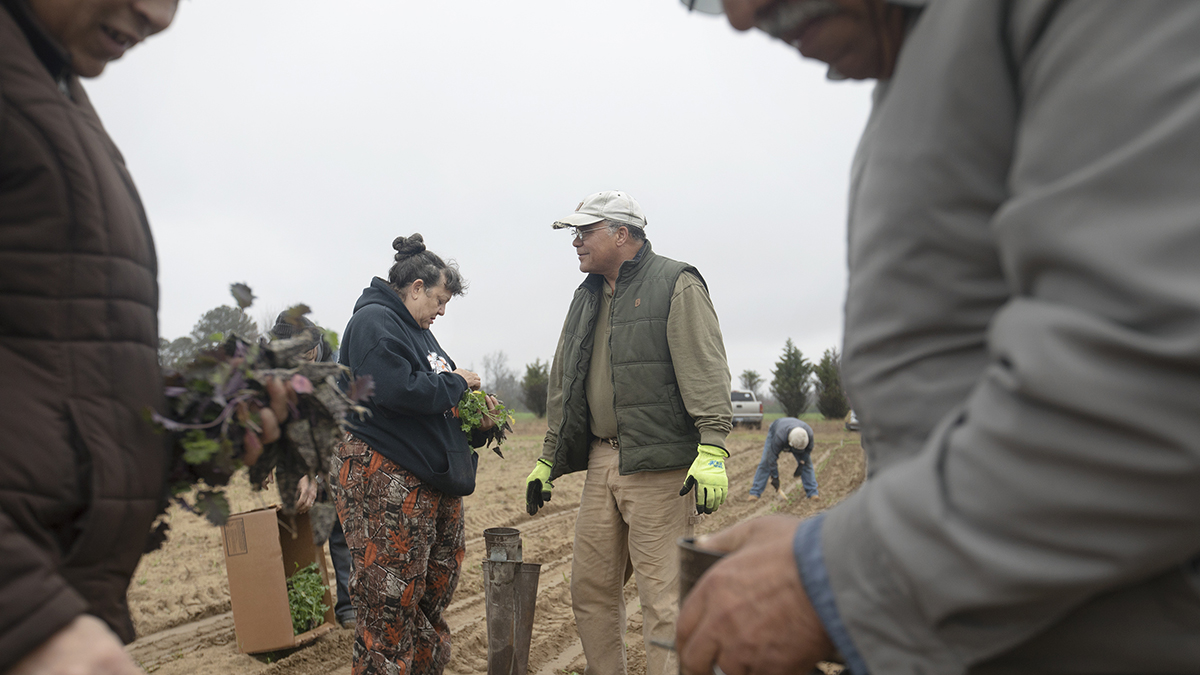Horticulture, history and hurricanes
In starting a community garden, the Coharie tribe reclaim their autonomy in agriculture, transforming it into a place for healing and community. Carolina senior Sierra Dunne records their story.

Every fall, after stripping the sorghum stalks of their leaves and chopping them down, the Coharie tribe gathers to make syrup. They squeeze the corn-like plants and let the fluid cook for more than five hours, separating out the chlorophyll to leave behind a sweet-smelling, caramel-colored liquid.
“When it gets to the right temperature and consistency, you take the fire away from it and you have a golden brown, beautiful syrup or molasses,” said Greg Jacobs, tribal administrator of the Coharie tribe in Sampson County, North Carolina. “It goes really good with a biscuit.”
In a state steeped with food and agriculture, the Coharie tribe’s sorghum tradition is one of many that makes up North Carolina’ rich history and culture — but their story is rarely told. Carolina senior Sierra Dunne wants to help change that.
“There are a lot of documentaries and writing on sorghum and its history in America already,” Dunne said. “But most of it comes from a white perspective, so there’s not really any Native voices included in this story.”
An American studies major, Dunne feels that the traditional narrative about the South often excludes Native history and influence.
“Native people were here for 12,000 years before white people settled here. From white settlement on is usually the only history we get,” Dunne said. “Even from that point in time onward, modern Native history is kind of erased. To have a holistic understanding of the South, you need to hear everyone’s story.”
To help expand knowledge about the Coharie tribe and Native traditions in North Carolina, Dunne filmed a documentary focusing on the garden where the tribe comes together to grow the food feeding their community, nourishing both their physical and spiritual health.




